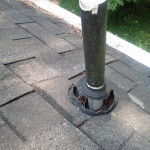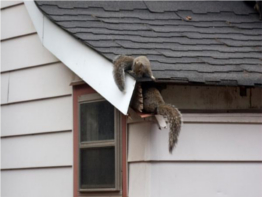How To Squirrel-Proof Your Attic

Homeowners have battled against the squirrel pests that like to frequent attics and other parts of a home. Squirrels have performed great feats of acrobatics and other tactics to get inside a house when the autumns brisk winds start to come around. There has been an increase in the population in squirrels, especially in the Toronto and surrounding areas, which leads to an increase of squirrels making their way into a home. Proofing your home, should be part of any effort controlling squirrels. Even though having squirrels inside a home can be a nuisance but they can cause damage to the siding of a home and can create numerous other damages to a home. Below are some great ways to squirrel-proof an attic.
The first thing that needs to be done in order to squirrel-proof your attic is to check the trees around the attic. If there are trees around the house than squirrels can find that they become an easy way to get inside the home. Install a two foot ring of sheet metal about seven feet high around the base of the trunk. A homeowner will want to make sure that they trim any limbs of the tree that are nearest to the base or those limbs that within’ six feet of the house.
The next step is to look at the house itself to see if there are any access points that a squirrel can use to get into the house. Squirrels do not live in attics during the summer because it gets too hot so that makes summer the best time to look for entry points. The first thing is to look for any holes, no matter how small, because they can be used for a squirrel entry way. Caulk or fix these holes. Look for rot, gaps, crevices, and other small areas that can be easy access. Fix any repairs, whether small or big, to effectively squirrel-proof many aspects of the home. One great repellent is mixing hot sauce with water. Put a tablespoon of hot sauce to a quart of water.
Install caps or screens on different access points to a home, including a fireplace or chimney, to ensure that no damage has been done and that a squirrel cannot enter the home. As the installation of the caps take place look for gaps in the flashing around the base of the chimney.
Another great way to help with squirrel-proofing is to use a repellant that has been proven to prevent squirrels from entering a home. With the above steps these products could be the finishing touch to squirrel-proofing a home. If a squirrel is already inside of the attic than getting out the animal humanly with animal control is the best route.




